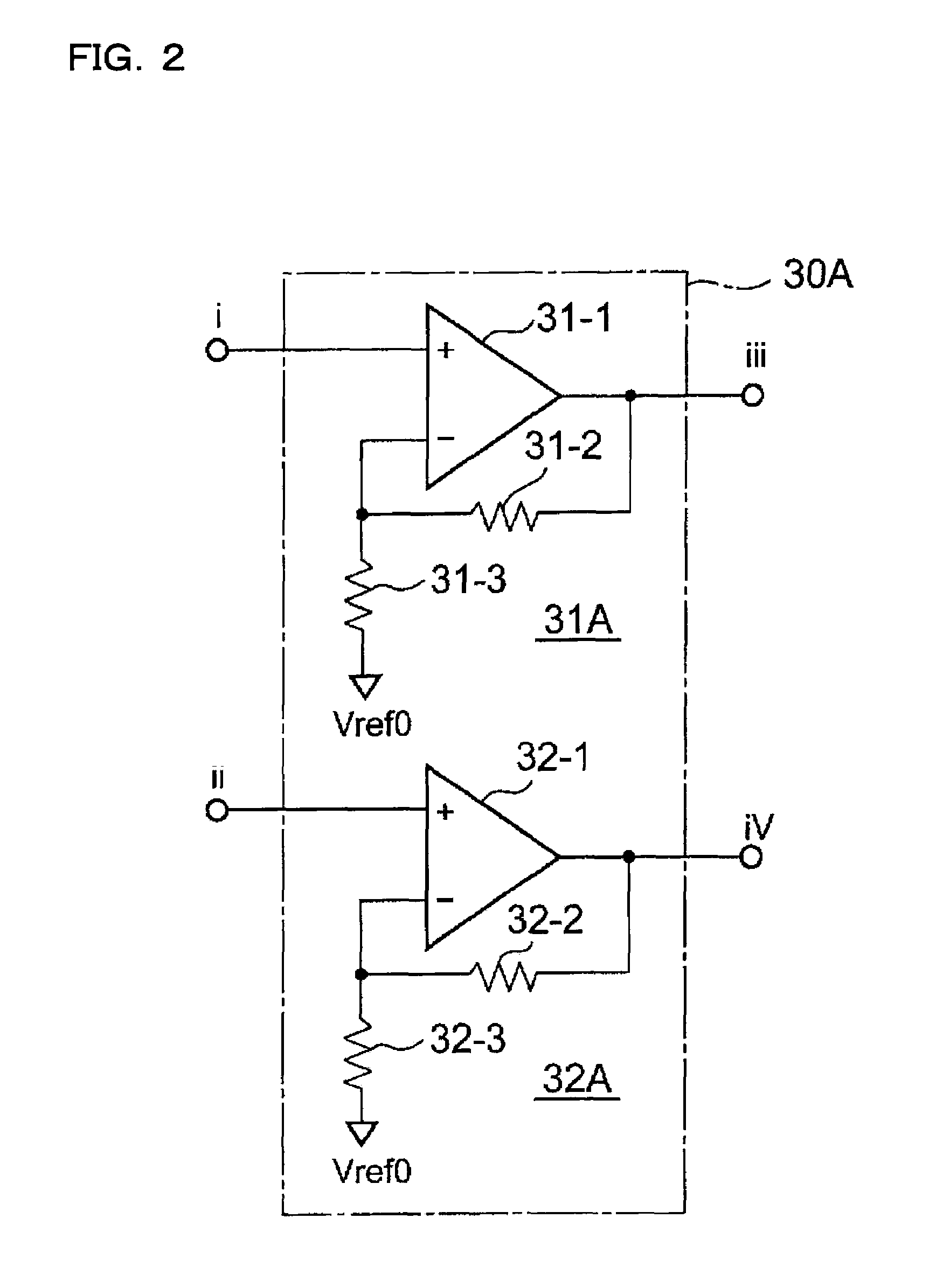Sensor circuit, semiconductor device, and electronic apparatus
a technology of semiconductor devices and sensors, applied in pulse generators, pulse techniques, instruments, etc., can solve the problems of difficult to reduce the size of a circuit, inability to adequately perform offset cancellation, and inability to form perfect differential configurations of voltage amplifiers b>3/b>, etc., to achieve simple structure and reduce current consumption
- Summary
- Abstract
- Description
- Claims
- Application Information
AI Technical Summary
Benefits of technology
Problems solved by technology
Method used
Image
Examples
first embodiment
[0046]FIG. 1 is a diagram showing the configuration of a magnetic sensor circuit according to a first embodiment of the invention. This magnetic sensor circuit is disclosed in Japanese Patent Application No. 2005-230781 (claiming priority based on Japanese Patent Application No. 2005-031715), which the applicant of the present invention once filed. In FIG. 1, as is the case with a conventional Hall device shown in FIG. 21, a Hall device 10 is formed in the shape of a plate that is geometrically equivalent with respect to four terminals A, C, B, and D.
[0047]For an effective signal component commensurate with the strength of a magnetic field applied to the Hall device 10, a Hall voltage appearing between a second terminal pair B-D when a power supply voltage Vcc is applied between a first terminal pair A-C of the Hall device 10 is in phase with a Hall voltage appearing between the first terminal pair C-A when the power supply voltage Vcc is applied between the second terminal pair B-D...
second embodiment
[0094]Now, a second embodiment will be described, taking up as an example a magnetic sensor circuit that can detect the magnetic field strength irrespective of the direction of a magnetic field relative to a Hall device.
[0095]FIG. 6 is a diagram showing the configuration of a magnetic sensor circuit according to the second embodiment disclosed in Japanese Patent Application No. 2005-230781, which the applicant of the present invention once filed. In FIG. 6, a magnetic sensor circuit 1A differs from the magnetic sensor circuit shown in FIG. 1 in that it further includes a control circuit 100, an OR circuit OR1, a latch circuit 71, and an inverter INV0. In other respects, the magnetic sensor circuit 1A is the same as the magnetic sensor shown in FIG. 1, and therefore overlapping descriptions will not be repeated.
[0096]The control circuit 100 outputs a power-supply ON signal POW, a first switching signal SW1, a second switching signal SW2, a third switching signal SW3, and clock signal...
third embodiment
[0139]A third embodiment will be described, taking up as an example a magnetic sensor circuit that can compensate for the temperature characteristic of the sensitivity with which to detect the magnetic field strength. The overall configuration of the magnetic sensor circuit of the third embodiment is the same as that of the magnetic sensor circuit shown in FIG. 1 (or FIG. 6), and therefore overlapping descriptions will not be repeated.
[0140]FIG. 12 is a diagram illustrating a current passing through the Hall device 10 shown in FIG. 1.
[0141]In FIG. 12, the switches 21 and 24 are each composed of a P-channel MOS transistor, and the switches 25 and 28 are each composed of an N-channel MOS transistor. The on resistance of the P-channel MOS transistor is RP, and the on resistance of the N-channel MOS transistor is RN. The resistance of the Hall device 10 is RH. The Hall voltage Vs outputted from the Hall device 10 is given by formula (5) below.
Vs=KH×IH×B (5)
[0142]Here, KH represents a ...
PUM
 Login to View More
Login to View More Abstract
Description
Claims
Application Information
 Login to View More
Login to View More - R&D
- Intellectual Property
- Life Sciences
- Materials
- Tech Scout
- Unparalleled Data Quality
- Higher Quality Content
- 60% Fewer Hallucinations
Browse by: Latest US Patents, China's latest patents, Technical Efficacy Thesaurus, Application Domain, Technology Topic, Popular Technical Reports.
© 2025 PatSnap. All rights reserved.Legal|Privacy policy|Modern Slavery Act Transparency Statement|Sitemap|About US| Contact US: help@patsnap.com



